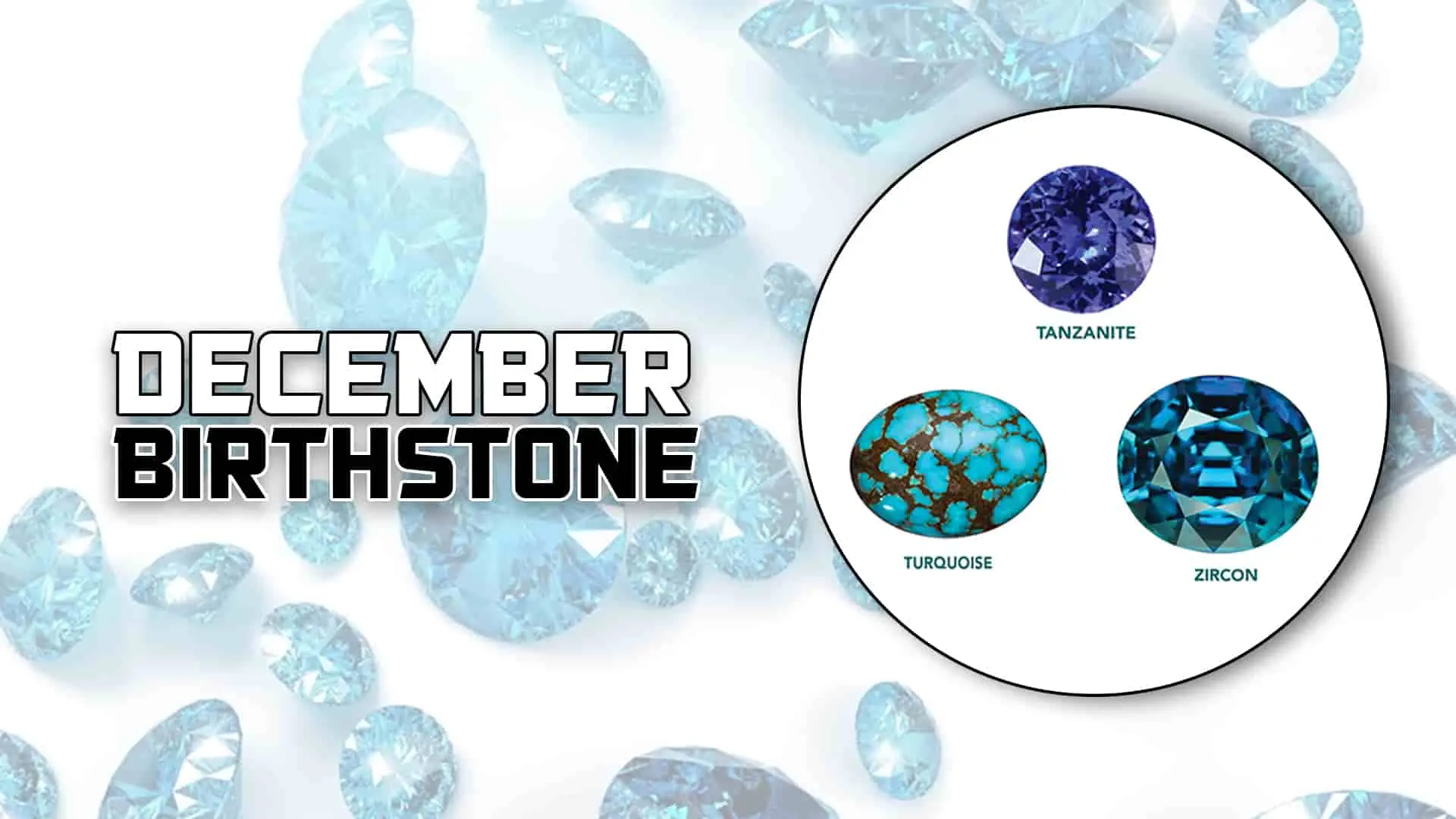The birthstones for December are blue topaz, turquoise, blue zircon, and tanzanite. The fact that there are three lovely gemstones available for December infants makes them incredibly fortunate. They are all renowned for their magnificent blue tones and are said to bring happiness and luck to those who wear them. These priceless gems also have a long history and a variety of symbolic meanings. People have worn and embellished them for generations, producing enduringly beautiful jewelry no matter which stone you select.
December Birthstone: Blue Topaz
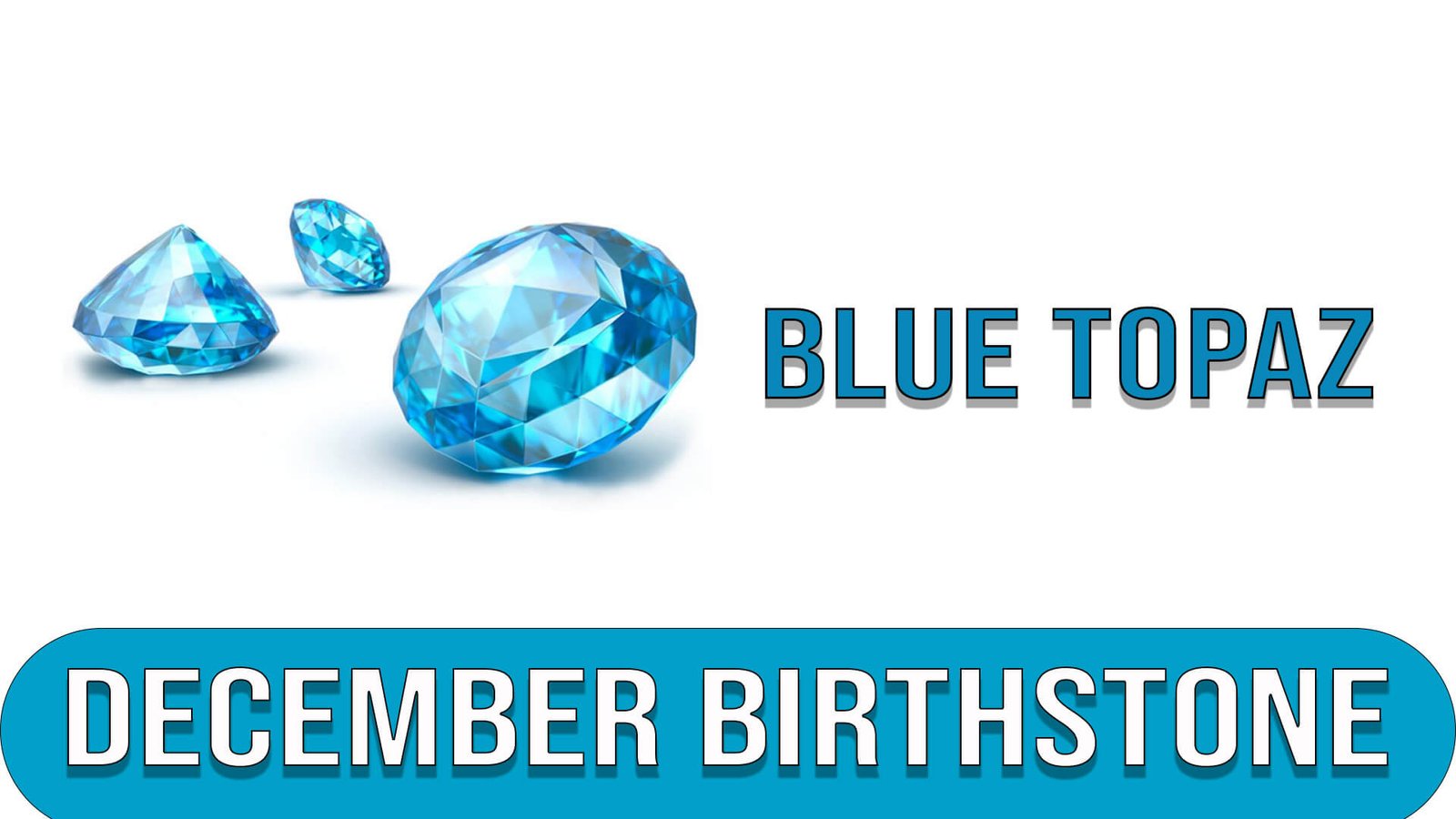
One of the contemporary birthstones for December is blue topaz. Aluminum and fluorine make up the silicate mineral known as blue topaz. It is fragile and brittle and has a glass-like luster and profound cleavage. Dark to chilly blues are some of its colors. A blue topaz may be referred to as London Blue (a deep, inky color), Swiss Blue (a vivid light blue), or Sky Blue (a light aqua color), depending on the intensity of the hue. Aquamarine and natural blue topaz frequently need clarification.
Topaz is a Sanskrit word that means “fire.” Irradiating colorless topaz produces the more prevalent type of blue topaz. Due to its adaptability, affordability, and availability in various forms and sizes, treated blue topaz is a favorite among jewelers and designers. Al2SiO4(F, OH)4 is the chemical formula for topaz, and because of its strong chemical bonds, topaz is harder than most silicate minerals.
Where in Blue Topaz Found?
There are several places where blue topaz can be found, including Brazil, the United States, Madagascar, Sri Lanka, China, Russia, Mexico, and more.
Color varieties of Blue Topaz
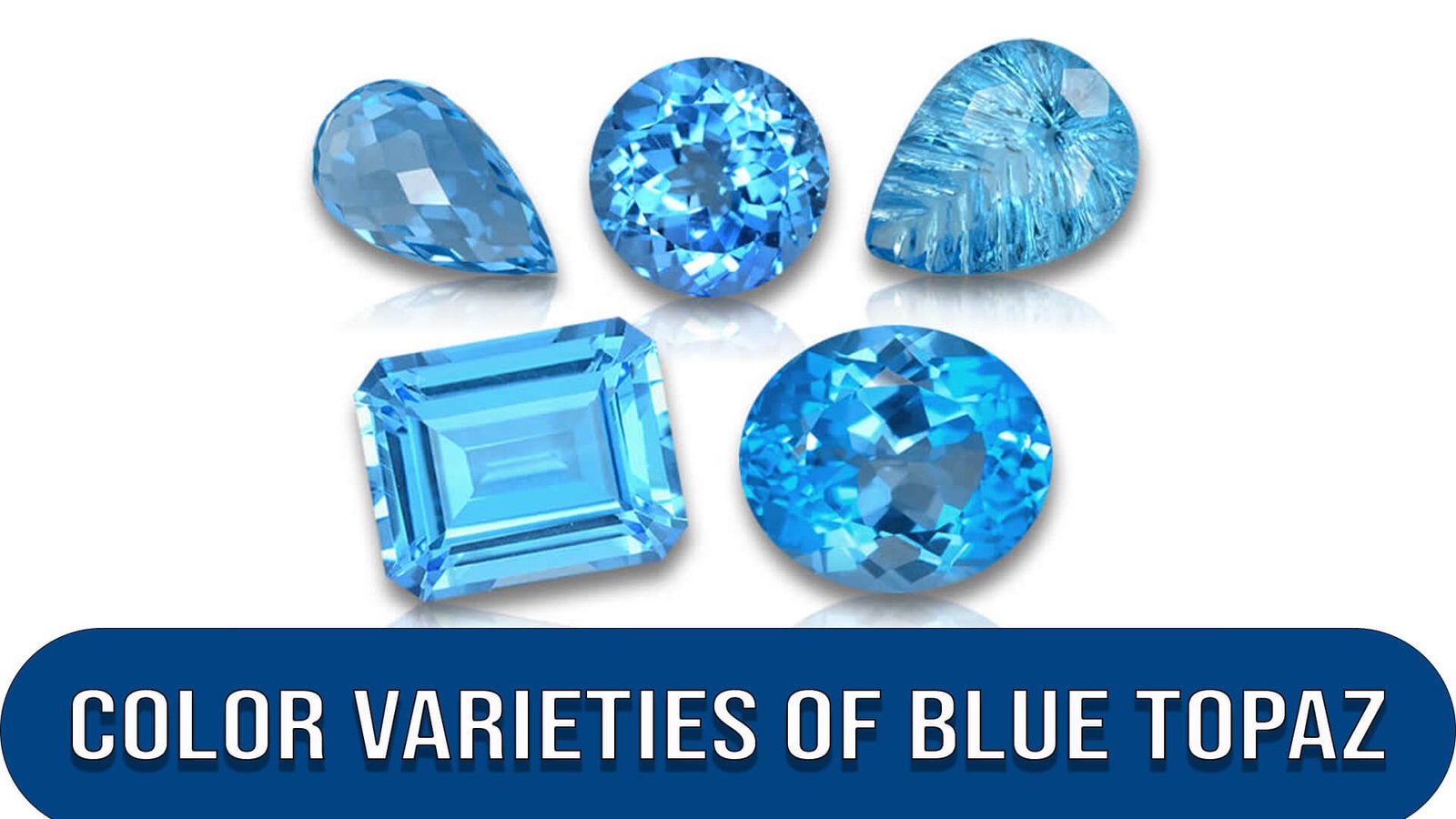
There are various hues of blue topaz, including sky blue, baby Swiss blue, Swiss blue, and London Blue.
London Blue Topaz
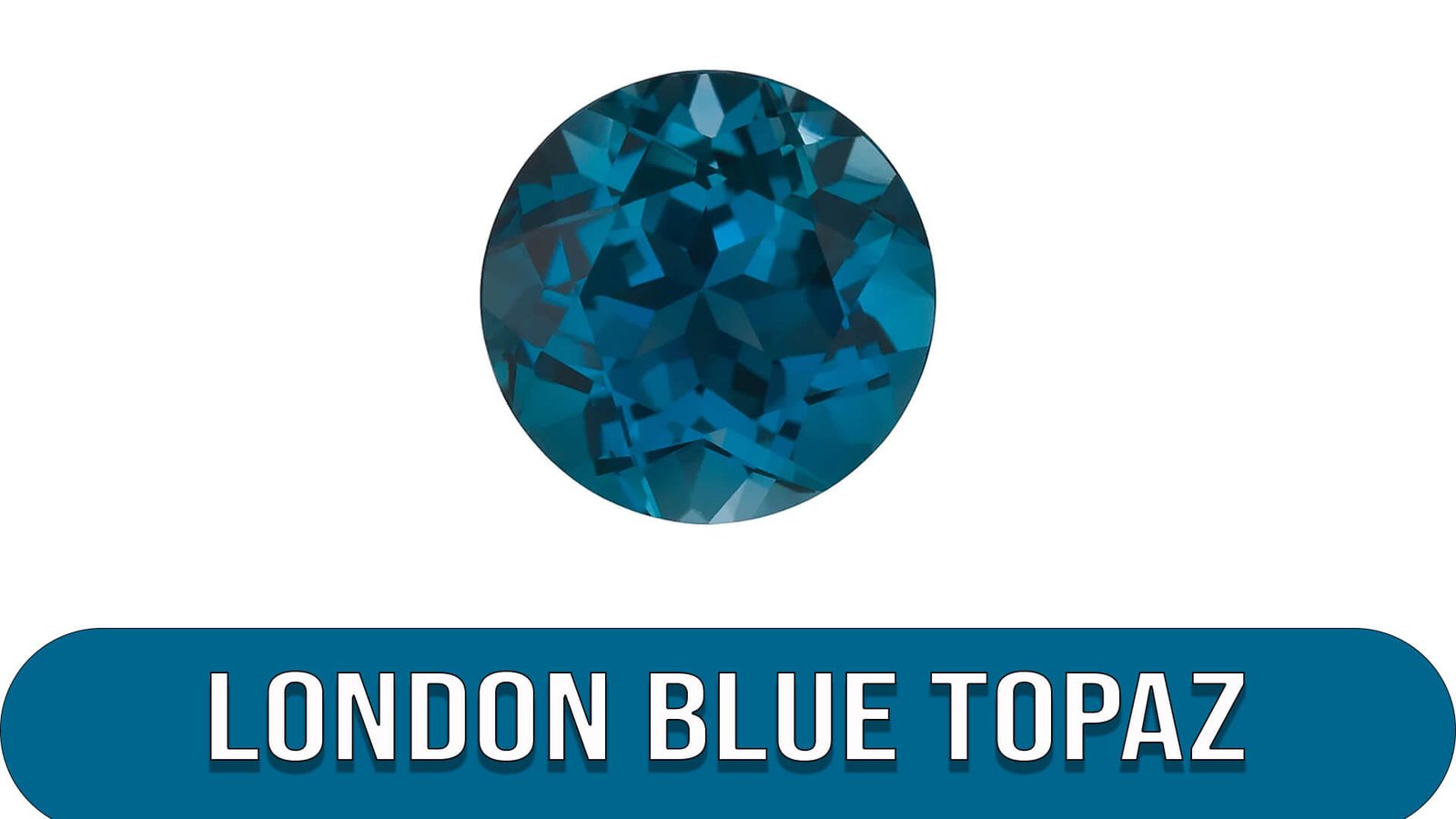
The London blue topaz has a distinctive, inky medium blue hue. The darkest, most prosperous topaz shade on the market is a London blue topaz. It is known as the “London blue topaz” because the largest blue topaz ever discovered, weighing 9,381 carats, is on display in the UK Natural History Museum in London.
The primary distinction between the London Blue, Swiss Blue, and Sky-Blue types is color. Swiss Blue Topaz is a vivid sky blue with a light tone and saturation, whereas London Blue Topaz is a deeper blue color with a dark style and saturation tinge. The heat treatment gives London blue topaz its rich blue color, yet you may notice a hint of green on the surface.
Some of the most affordable topaz on the market is blue. In many cases, the stone’s cut is just as valuable as its color. London blue topaz is the most sought-after and expensive type of blue topaz, selling for between $10 and $30 per carat.
Swiss Blue Topaz

The Swiss blue topaz has an electric blue hue. Jewellery made with blue topaz is trendy. Like London blue topaz, you cannot find it in nature and must be treated to achieve its vivid color, but it will never lose that color.
Blue Topaz History, Properties, Symbolism, and Folklore
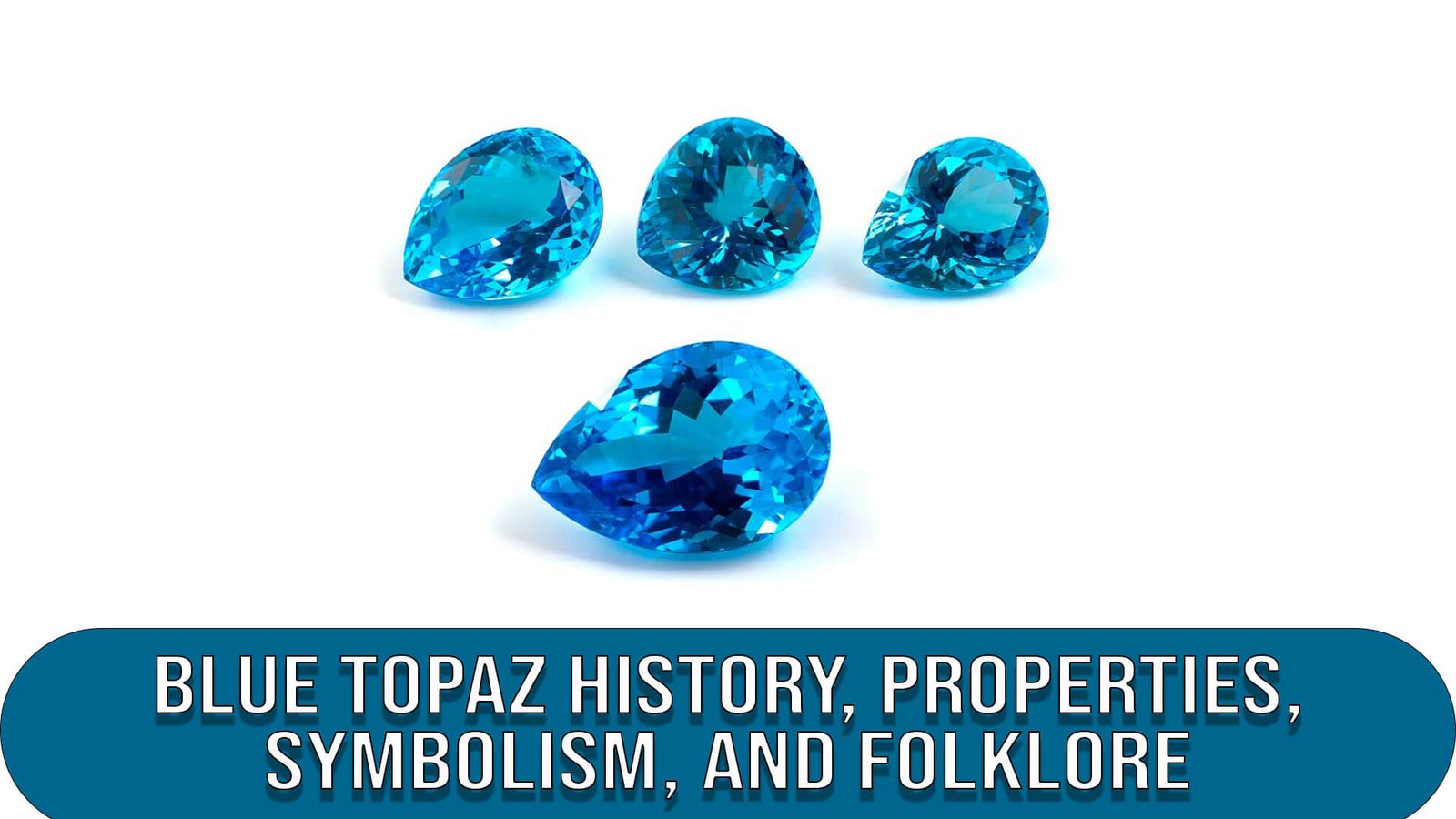
Blue topaz has a rich history dating back thousands of years. It was widely used by ancient civilizations, including the Egyptians and Romans, who believed it had healing powers and could protect against harm. The name “topaz” is derived from the ancient Sanskrit word “tapas,” meaning fire, reflecting the stone’s vibrant and captivating color.
Blue topaz is a gemstone with remarkable properties. It is a durable gem, ranking 8 on the Mohs scale of hardness, making it suitable for everyday jewelry. The stone is often transparent or translucent, allowing light to pass through and creating a brilliant sparkle. Blue topaz comes in various shades of blue, from pale sky blue to deep Swiss blue, offering a wide range of options for jewelry enthusiasts.
Symbolically, blue topaz is associated with clarity, calmness, and communication. It enhances one’s ability to express thoughts and feelings, promoting effective communication and understanding. The stone is also associated with tranquility and serenity, providing peace and relaxation to those who wear it. Blue topaz is often used to symbolize fidelity and love, making it a popular choice for engagement rings and anniversary gifts.
Blue Topaz has been surrounded by folklore and legends throughout history. Ancient people believed that wearing it brought protection and guarded against evil spirits. Some cultures associated blue topaz with the god of the sun, attributing it with the power to dispel darkness and bring about positive energy. The stone also brings good fortune and success, making it a cherished gem for those seeking prosperity and abundance.
Care and Cleaning of Blue Topaz
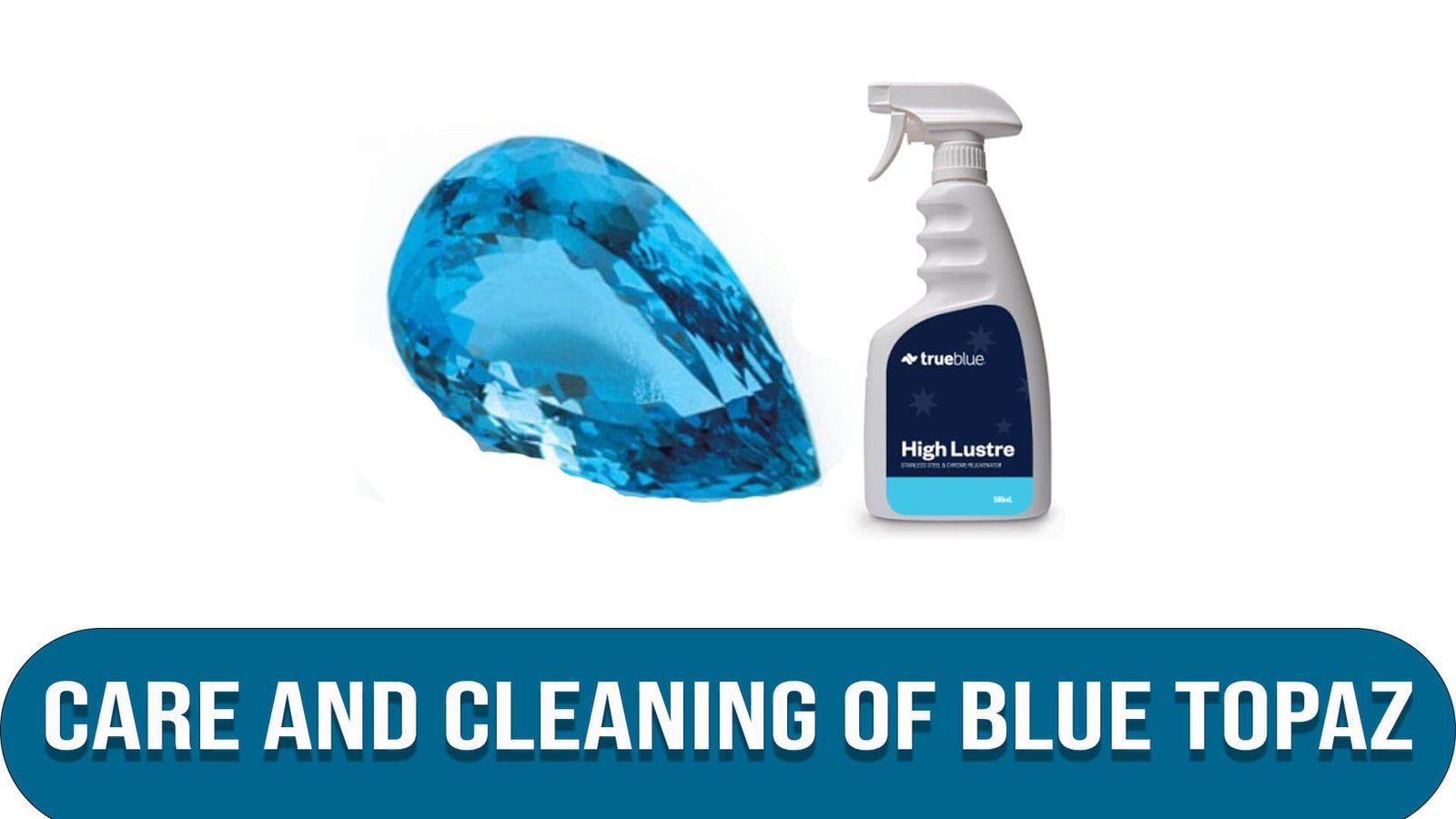
It would be best not to clean blue topaz gemstones with steam or an ultrasonic cleaner. Never clean jewelry over a drain since it could easily fall and disappear. The best way to clean blue topaz is with warm water and mild soap in a bowl or glass. You can gently scrub the gemstone with a gentle toothbrush before being allowed to air dry.
December Birthstone: Blue Zircon
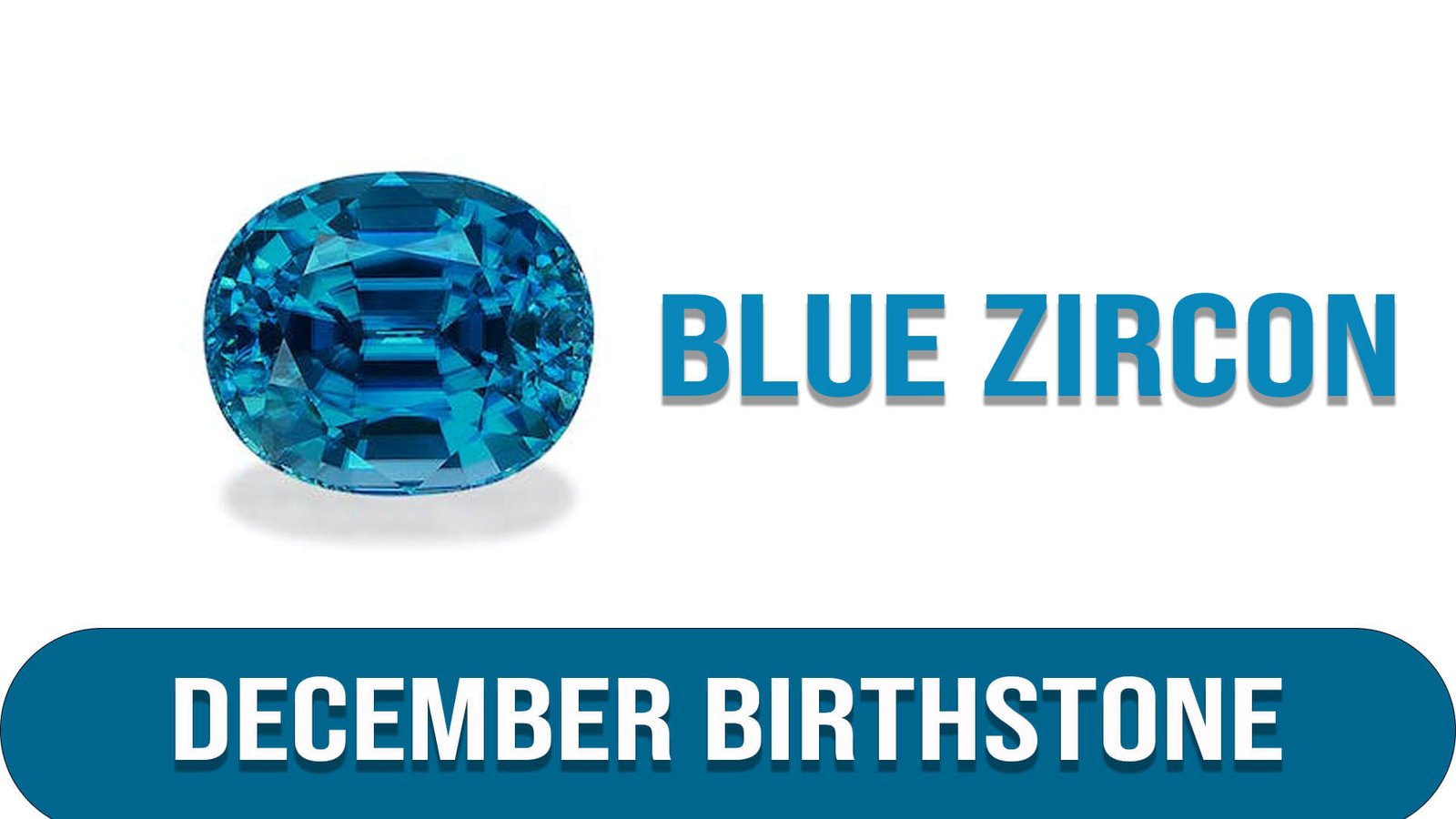
Blue zircon is recognized as a contemporary birthstone for December, along with blue topaz and tanzanite. Lapis lazuli and turquoise are the more conventional birthstones for December.
Zircon, also known as zirconium silicate, is a mineral that should not be mistaken for cubic zirconia, a manufactured substitute for diamond. Zircon is a translucent mineral with the chemical formula ZrSiO4 with a distinctive tetragonal crystal stem. In contrast, cubic zirconia is produced of zirconium oxide, demonstrating their distinctness.
Zircon is prized for having a high refractive index and being one of the gemstones most closely resembling a diamond. Among other distinctive properties, its fire and luster are comparable to those of diamonds and are higher than those of sapphire, ruby, or tanzanite.
Where is Zircon Found?
The abundance of jewels in Sri Lanka is legendary: Some of the gem minerals found there include quartz, ruby, alexandrite, spinel, tourmaline, moonstone, and sapphire in various colors. So too, is Zircon, the birthstone for December. One of Sri Lanka’s most fruitful regions is Ela Hera, located in the island’s center. A dramatic environment comprises mountains, jungles, and turbulent streams.
Zircon birthstones in blue, pink, purple, orange, and yellow-brown colors are famously produced in Australia’s Harts Range. If you go there, you will find wide-open savannahs, dried-up creek beds, and low hills that stretch into the distance. This December birthstone is mined on Zircon Hill. The surrounding city of Alice Springs is well-known for its indigenous art, outback culture, and oddball athletic events like a regatta race in a dried-up riverbed.
This December birthstone is frequently found close to sapphire deposits. In addition to Sri Lanka and Australia, Myanmar, Vietnam, and Cambodia are among the nations where the jewels intersect.
Color and Appearance of Blue Zircon
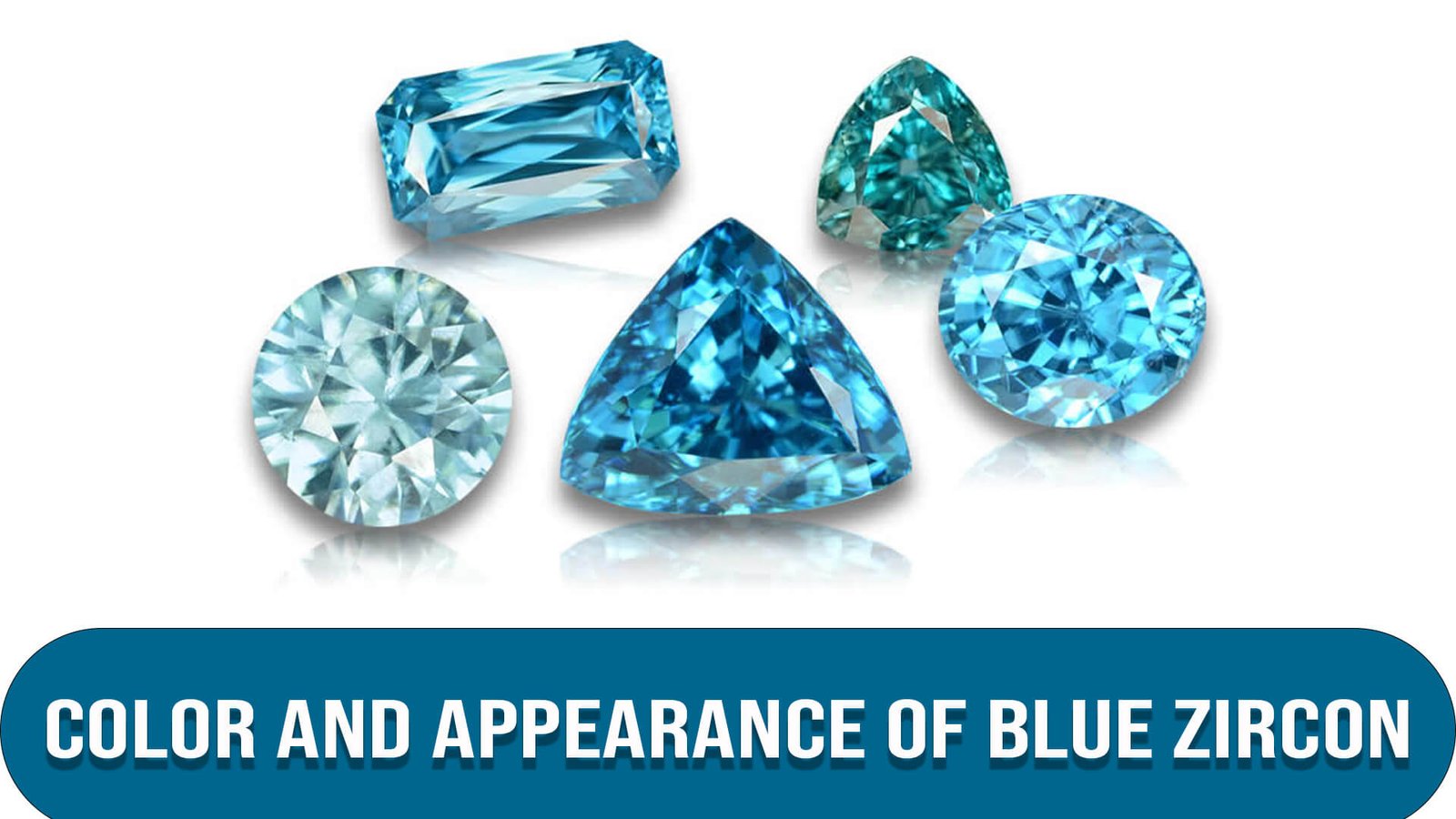
Zircon is colorless, but because it reflects light effectively and displays fire and brilliance, it has historically been mistaken for diamonds and manufactured cubic zirconia. The birthstone has a brilliant blue or sky-blue color when heated. When exposed to direct sunshine, the color temporarily fades but quickly returns to its original state when stored in a relaxed, dark environment.
When viewed from different angles, this stone is renowned for shifting colors, instantly capturing the attention of all gem lovers. You can also find zircon in green, red, white, honey-gold, and striking blue shades. The best blue zircon specimens, on the other hand, have solid green tones and medium tones.
Blue Zircon History, Properties, Symbolism, and Folklore
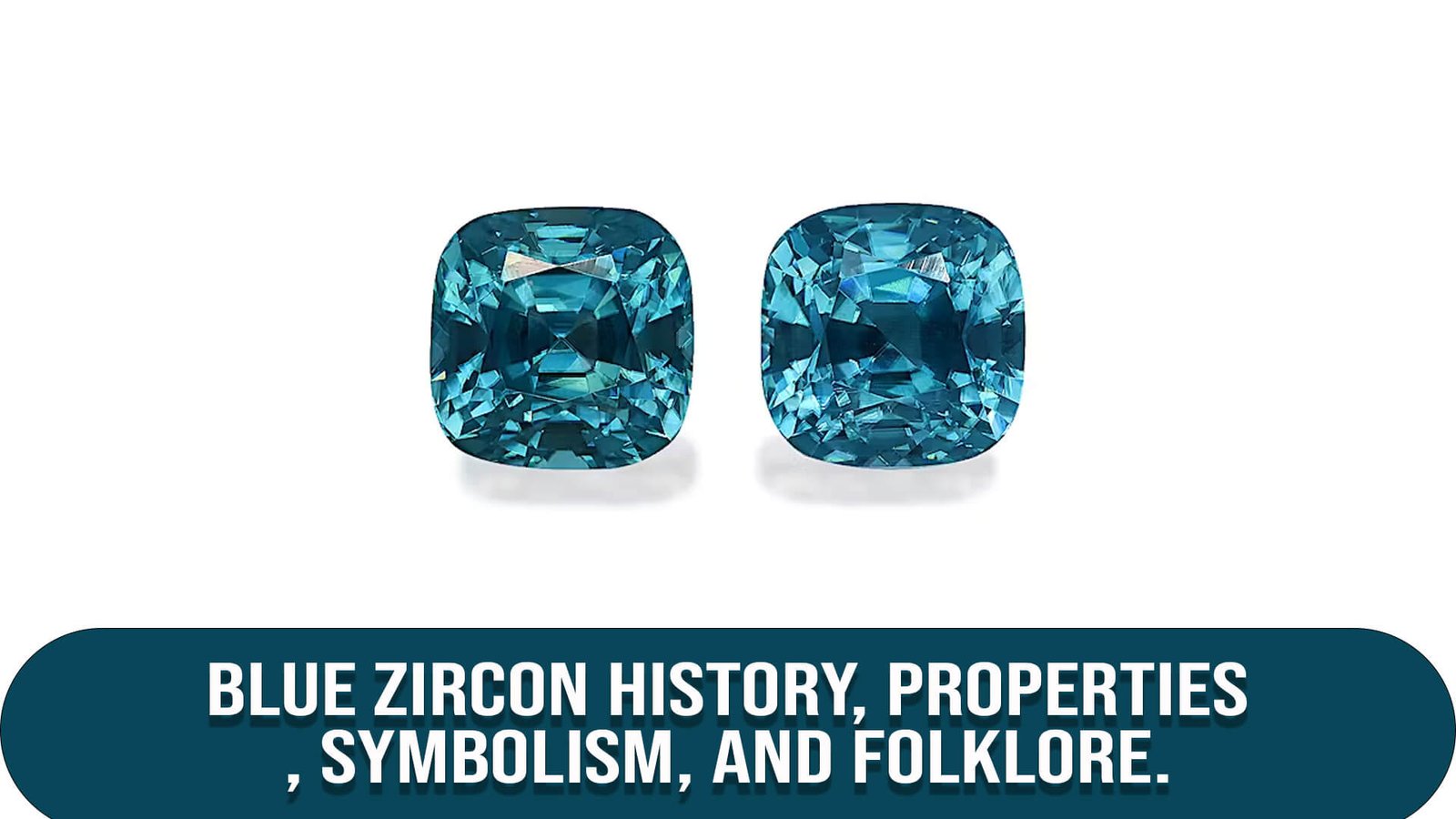
The oldest mineral on Earth is zircon, which has existed for 4.4 billion years. Due to its significance to geology and culture, this diamond has a rich history and immense historical worth. In particular, this birthstone for December provides a glimpse into the past by illustrating pressure fluctuations and erosion variations throughout Earth’s history.
It’s up for contention where the name “zircon” came from. According to one school of thought, the term “zircon” is derived from the Arabic word “zark,” which means “vermilion” or “cinnabar.” However, other academics contend that the term derives from the Persian word “zargun,” which means “gold-like.” However, both hypotheses are viable when considering Zircon’s wide range of colors.
Zircon had healing properties in the Middle Ages, including the capacity to induce sleep, guard against evil spirits while sleeping, and treat bodily afflictions, including blisters, ulcers, and varicose veins. It was also uncovered that people formerly thought the stone shielded them from harm, death, and poison in religious writing from this era.
One of the nine jewels that make up the Nava Ratna, a jeweled pendant representing celestial bodies in Hinduism, is the birthstone for December. Together, the nine diamonds create a potent talisman that repels evil spirits and promotes prosperity, health, and wisdom.
In more recent times, during the Victorian era, the English developed a severe obsession with zircon. As a result, English estate jewelry from the 1880s contains some excellent examples. Additionally, many estate items from that period included zircon hues. Zircon, which was hazy or smoky, was also a common material for jewelry when people were grieving.
Blue zircon is linked to knowledge, success, and self-assurance. People have used it to adorn necklaces and other items for generations, believing it would protect them and sharpen their intuition. In particular, meditation uses zircon to aid mental organization and clarity since it is supposed to have a protective aura.
The December birthstone is a potent yoga meditation gemstone because it can remind one of unfulfilled ambitions and provide purity of mind, honor, and a clear path to one’s objectives and desires.
Care and Cleaning of Blue Zircon Birthstone
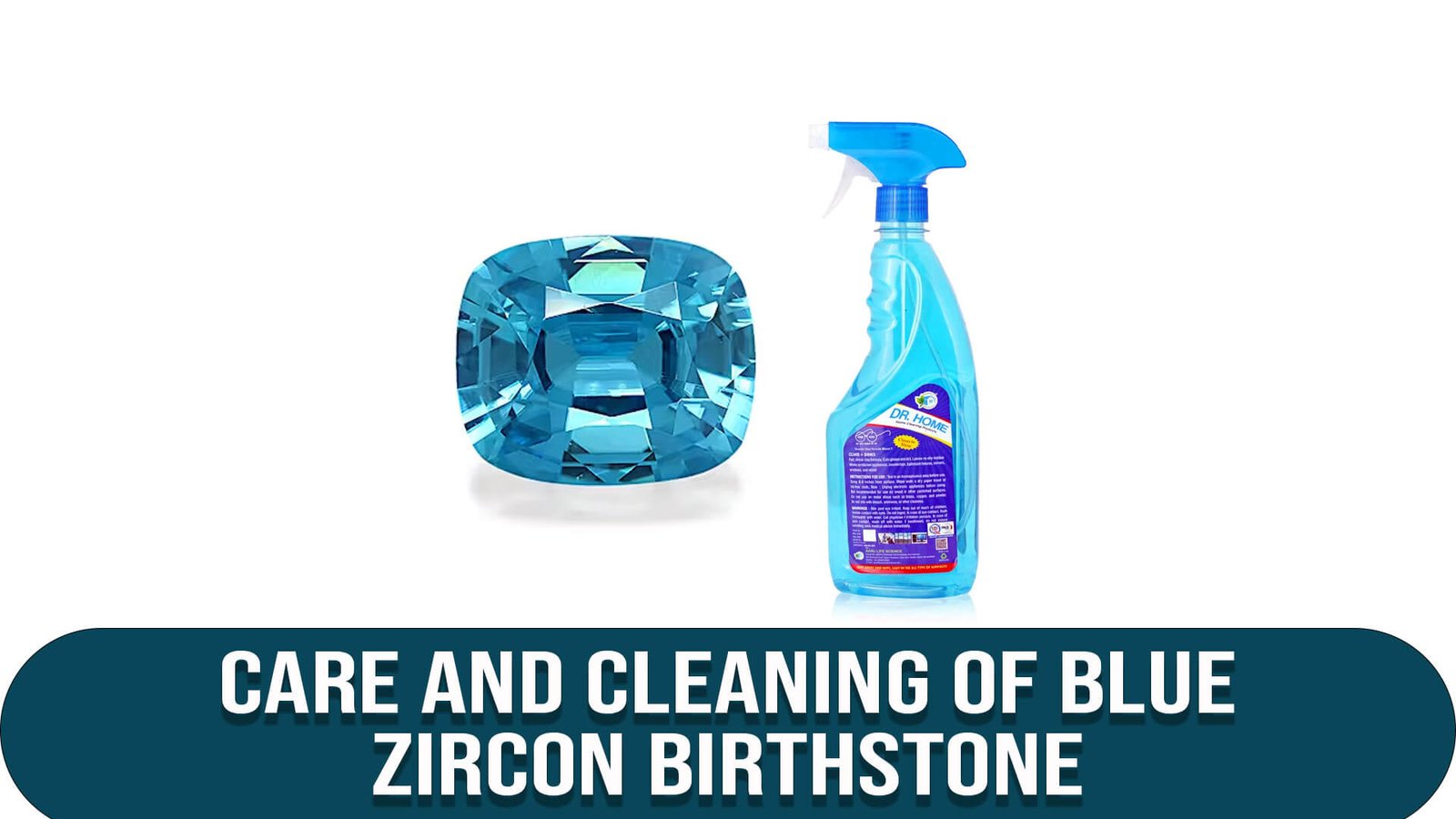
On the hardness scale of the Mohs, zircon falls between 6 and 7.5. It is frequently heated to make orange, yellow, red, blue, and colorless variations. The gem is typically stable in the presence of light, but after prolonged exposure to bright light, specific heat-treated stones may return to their native colors, generally light brown. Some zircons can change color when exposed to heat. When exposed to chemicals, this birthstone for December remains stable.
Zircon tends to abrade; thus, avoiding wearing it in demanding activities like gardening, athletics, or household chores is recommended. Use a gentle brush and warm water with light soap to clean your zircon. It would help if you never cleaned this birthstone for December should with an ultrasonic or steam cleaner.
December Birthstone: Tanzanite

Tanzanite, a vibrantly colored pleochroic gemstone with varying shades of blue and violet, frequently with purple highlights, is another contemporary birthstone for December. The source of tanzanite, discovered for the first time in 1967, is comparatively new to the gemstone industry. The unusual and multifaceted aspect of tanzanite suggested it was something else when it was once considered sapphire. Gemologists quickly identified the gem as a unique mineral, zoisite.
Tiffany & Co., which recognized the gem’s potential when it was discovered and became a major global distributor, gave tanzanite its name. They named it Tanzania in honor of the African nation that hosted it to improve consumer familiarity with the new stone.
Due to its widespread use, tanzanite was formally added in 2002 as a third birthstone for December, joining turquoise and zircon. Another occasion to offer tanzanite is to mark a couple’s 24th wedding anniversary.
Color and Appearance of Tanzanite
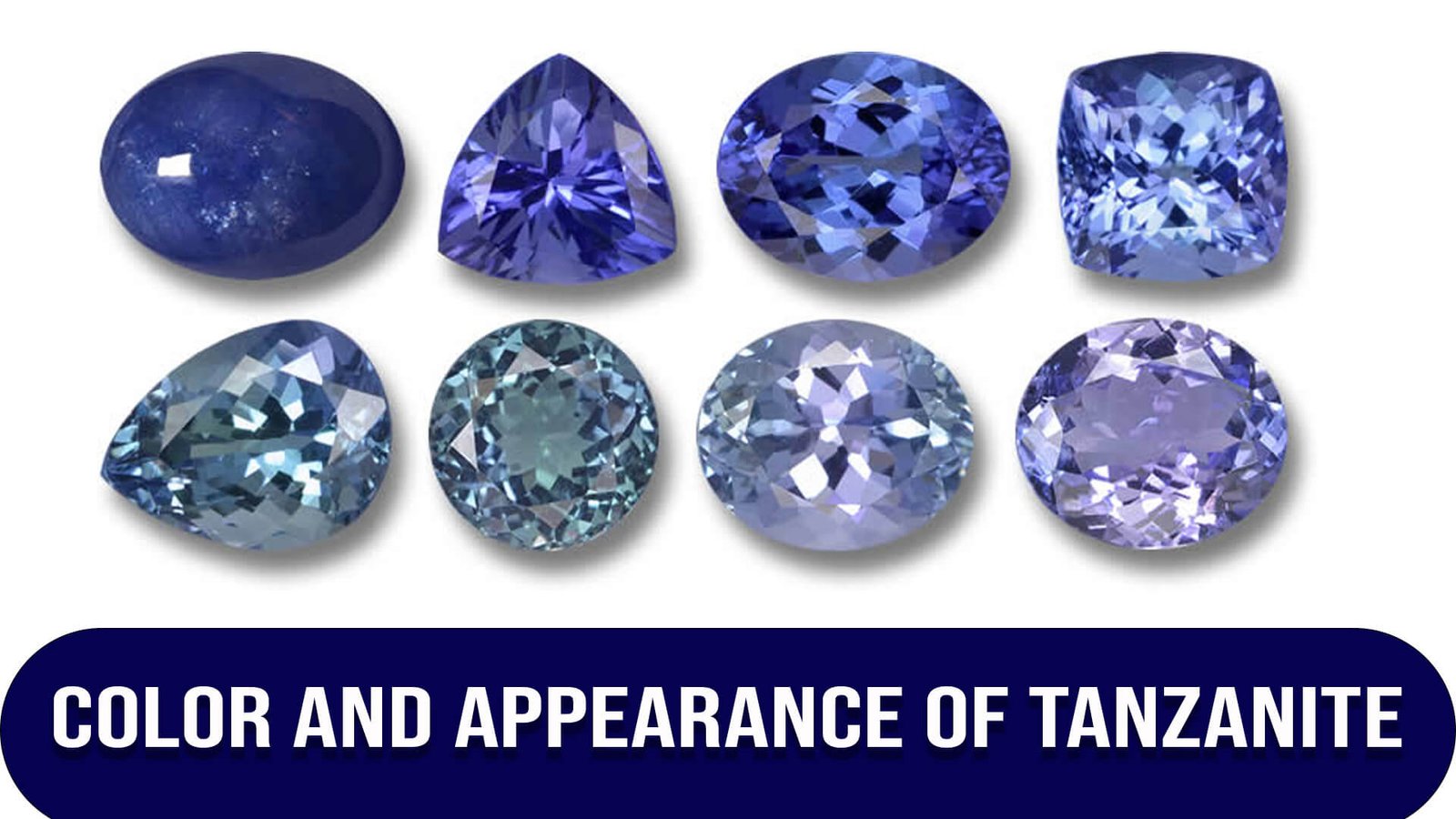
Tanzanite, the birthstone for December, is a vividly colored pleochroic stone that typically appears in blue and violet tones with purple highlights depending on the viewing angle. Each tanzanite gemstone is unique because it can all occur in varied combinations of various colors presented simultaneously. As a result, you receive a captivating, multi-dimensional piece of jewelry that will make a statement every time you wear it.
Tanzanite History, Properties, Symbolism and Folklore
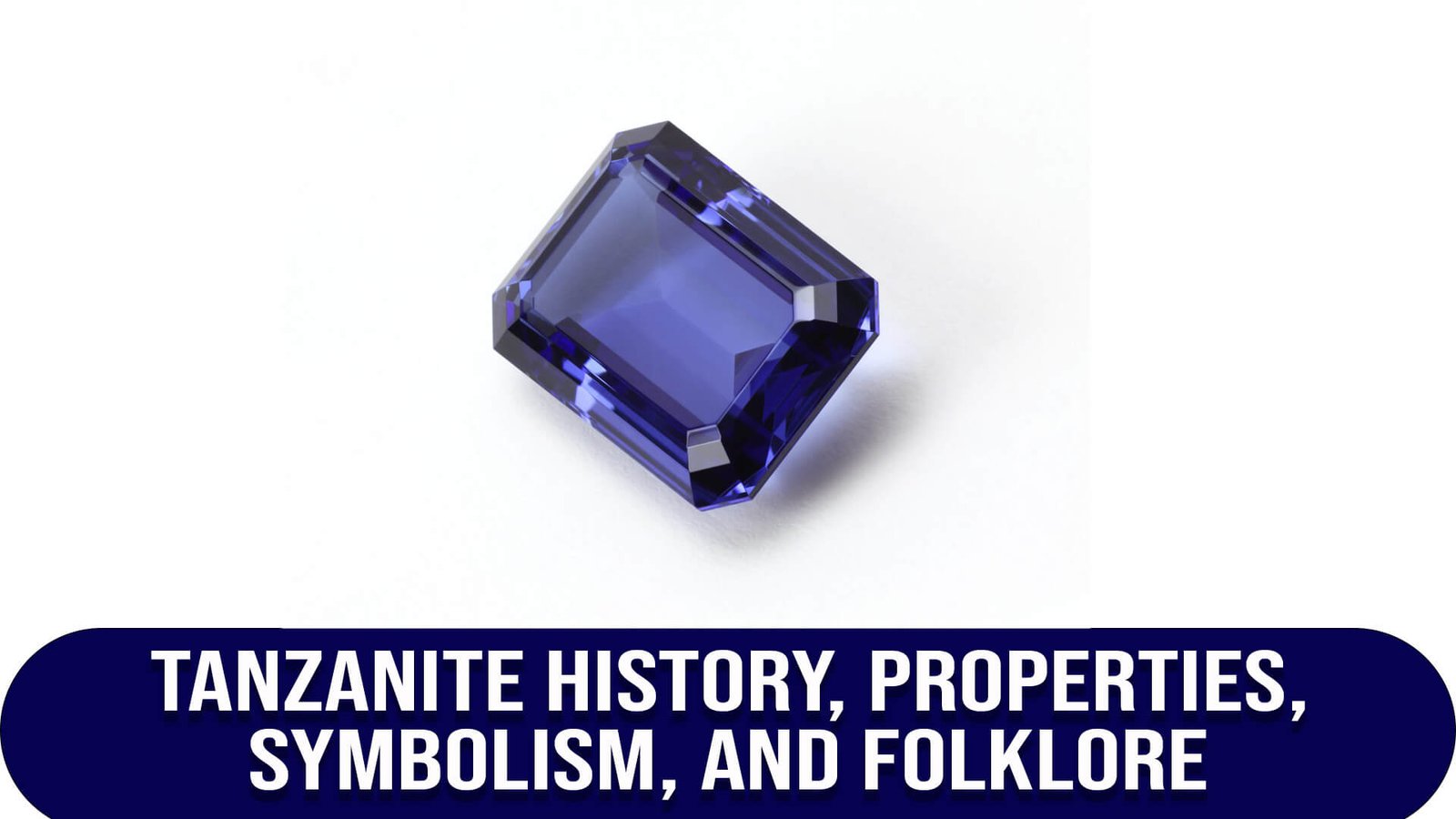
Since the stone has only recently been identified, there are few tales to be recounted regarding tanzanite history and folklore. However, this does not lessen its appeal as December’s birthstone has rivaled the Big 3 of precious stones: ruby, sapphire, and diamond. Today, giving this diamond as a birthstone is customary to mark a couple’s 24th wedding anniversary.
People thought the jewels had a solid and robust link with the forces of nature when the Masai tribe members first discovered them. After all, the wildfire started with lightning strikes and raised the ground temperature, causing the brownish stones to exhibit the well-known blue and violet tones. Because of this, people thought the gem represented the untamed enchantment and strength of the natural world.
In addition, tanzanite’s vibrant hues are considered to offer special abilities and meaning. For instance, blue is thought to be highly spiritual and associated with life and heaven. In addition, blue tanzanite offers healing, energizing, and dynamic stabilizing properties.
According to tanzanite stones, purple and violet are associated with the monarchy and spiritual authorities. Additionally, they are thought to be linked to the Crown Chakra, which enables the wearer to develop wisdom and intuition.
Where is Tanzanite Found?
The only site on Earth where tanzanite is commercially mined is in northern Tanzania’s Merelani Hills. The surroundings include rocky terrain, scrub vegetation, grass-covered hillsides, and occasional trees. Thousands of people retrieved tanzanite from mines sunk more than 100 meters (more than 300 feet) deep into the ground in extensive mechanized operations. The snow-covered slopes of Mount Kilimanjaro tower to the north of the mines.
Care and Cleaning of Tanzanite Birthstone
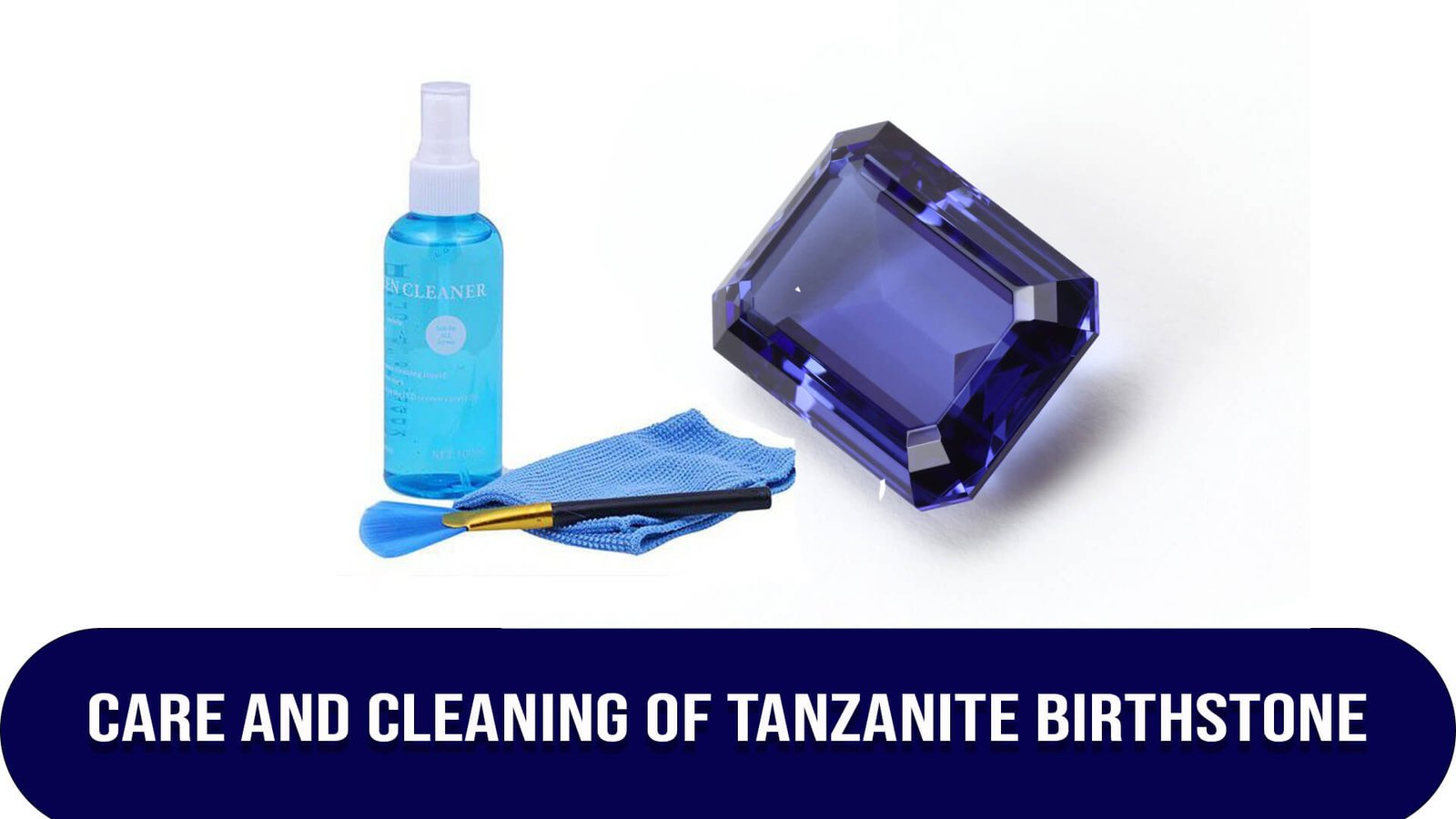
This Mohs scale of hardness gemstone for December ranges from 6 to 7 and is resistant to common chemicals, light, and heat. However, the December birthstone is readily abraded and is susceptible to cracking when exposed to extremely high temperatures or abrupt temperature fluctuations. Acids like hydrochloric and hydrofluoric can damage it.
Most tanzanites start as brownish zoisite and are then heated to achieve the blue to violet tones that make them the birthstone for December. There are no additional issues regarding durability because the finished color is permanent.
Earrings or pendants are the ideal settings for your tanzanite birthstone. Although wearing a ring daily is not advised, the December birthstone can make a lovely special-occasion accessory with a protective mounting and little maintenance.
The finest cleaning solution for this December birthstone is warm, soapy water. It is never advised to use an ultrasonic or steam cleaner on tanzanite.
December Birthstone: Turquoise
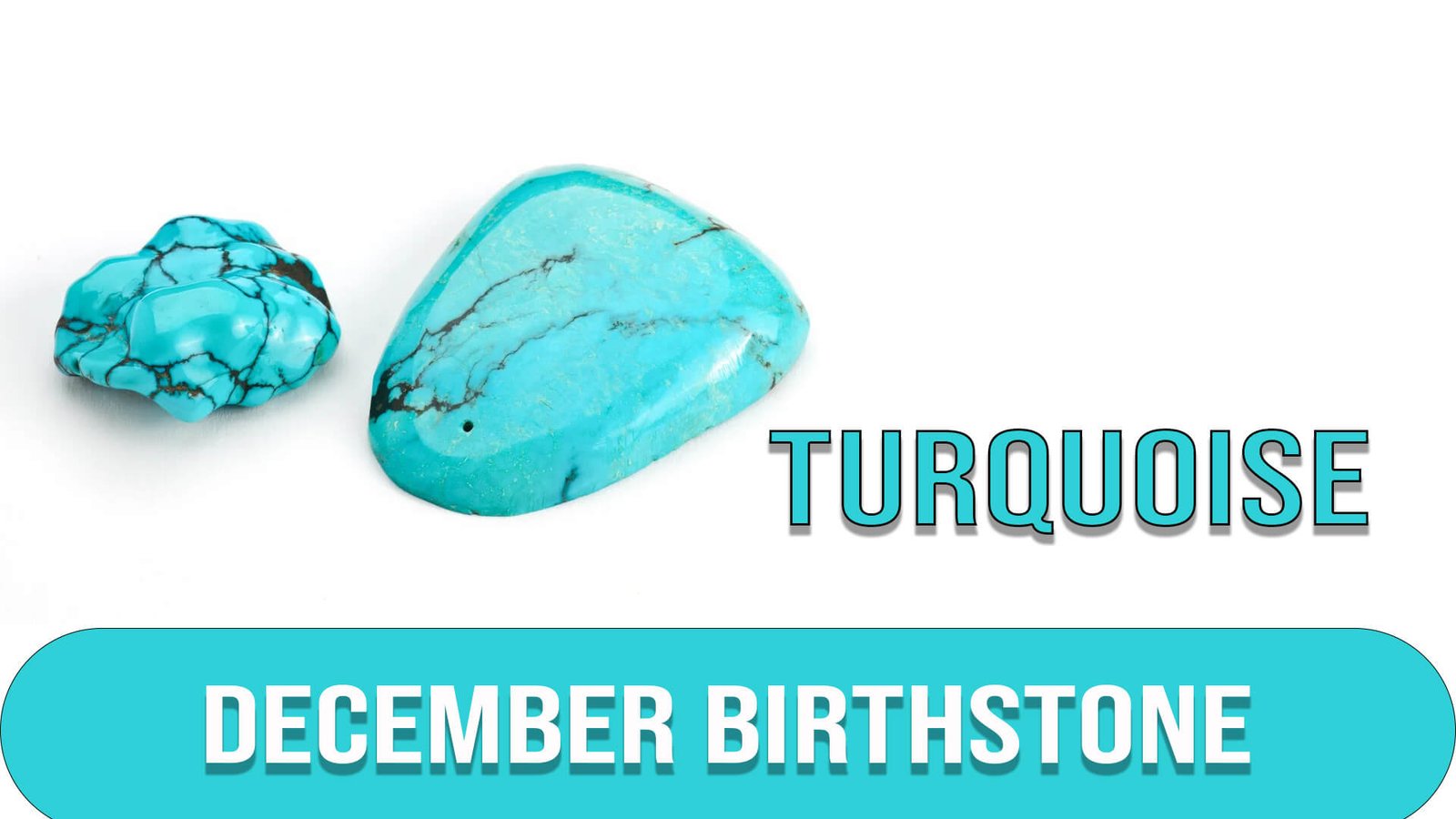
Turquoise has been prized since antiquity and is renowned for its distinctive color, which ranges from powdered blue to robin egg green. Only a few minerals have given names to things resembling their unique color. The French term Pierre torques, which referred to the “Turkish stone” imported to Europe from Turkey, is where the word “turquoise” first appeared in the 13th century. Direct sunshine and solvents like cosmetics, perfume, and natural oils can damage turquoise. Turquoise is admired for its name-giving color and long history; its appeal always stays in style.
Where is Turquoise Found?
In Iran’s Nishapur region, turquoise has been mined for millennia. The terms “robin’s egg blue,” “sky blue,” and “Persian blue” are all used to describe the highly sought-after, intensely blue turquoise from this region. Regardless of the provenance, trade experts now use these words to refer to turquoise as this color.
Until the 1920s, New Mexico was the country’s top producer of turquoise, but today Arizona and Nevada account for most of the nation’s output of this birthstone for December. Names of mines like Dry Creek, Easter Blue, Emerald Valley, and Fox are evocative. A historically significant source well-known for producing deep blue turquoise is the Kingman mine in Arizona. Arizona’s Sleeping Beauty mine now closed to turquoise mining, was a productive producer for over 40 years.
The leading producer of this December birthstone today is China. Most of the gem-quality turquoise being mined in China comes from Hubei Province.
Color and Appearance of Turquoise
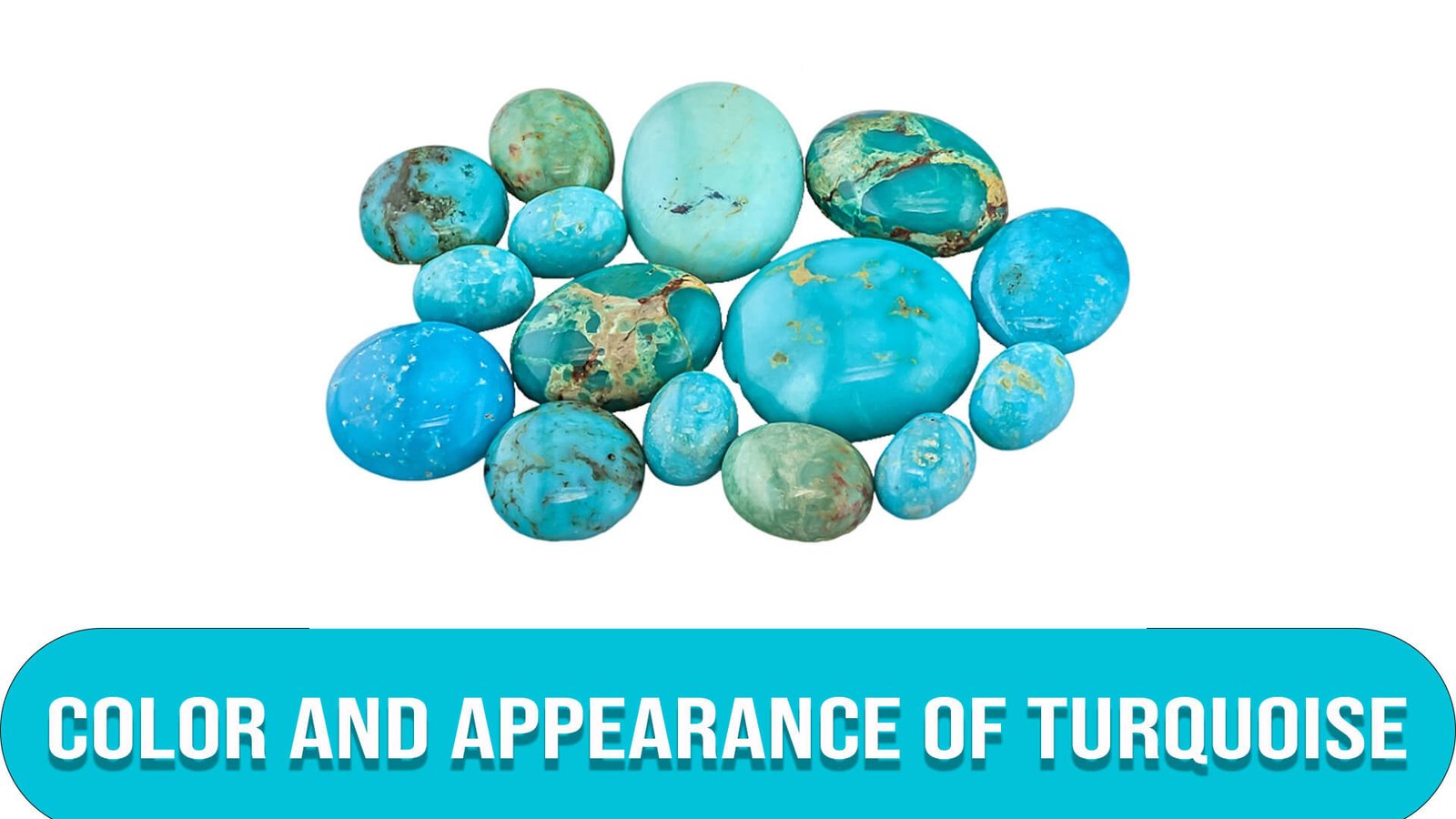
The magnificent rock known as turquoise is prized for its deep blue color and unique patterns. This December birthstone is opaque rather than translucent, unlike tanzanite and turquoise. With a distinctive tri-clinic structure that can be waxy to the touch, glassy, or dull in appearance, it mixes hydrated copper phosphate with aluminum.
Although the birthstone for December is noted for its blue tones, it may also exhibit vivid blue-green, green, and yellowish-green tones. The copper-rich gemstones have a much bluer appearance. On the other hand, jewels with higher iron content typically have a greener appearance. Less frequently seen turquoise has high zinc content and a more yellowish tint.
The most valuable turquoise is, last but not least, that which has a “bright robin’s egg blue” hue. Any other color variations, like green or yellow, could lower the stone’s value.
Turquoise History, Properties, Symbolism and Folklore
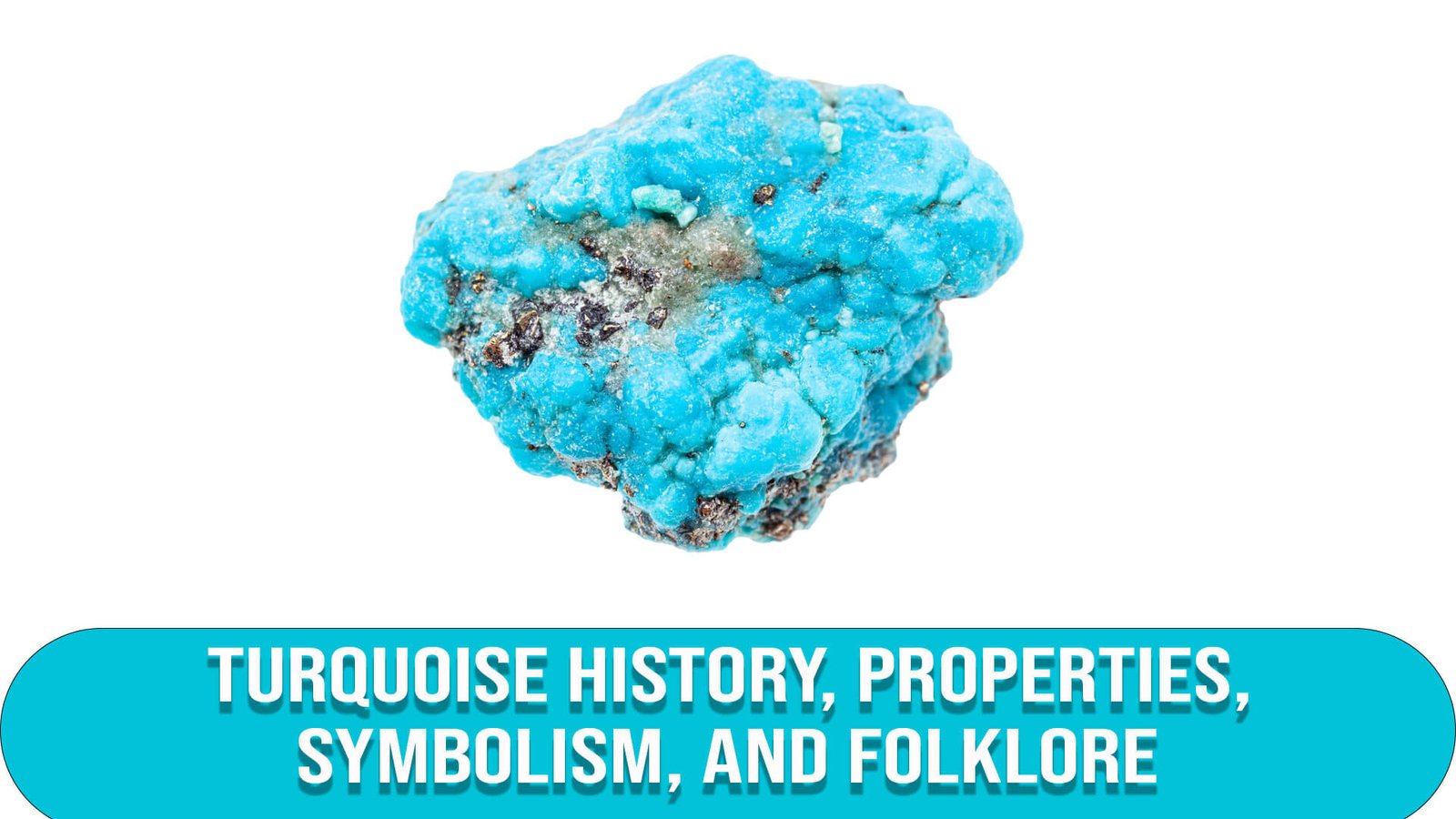
Among the birthstones for December, turquoise is the second-oldest. Kings, queens, pharaohs, and other prominent people of the ancient world proudly wore it since those societies regarded it as a holy stone. More than 3,000 years ago, Chinese artisans sculpted turquoise, which is still considered a customary present for the 11th wedding anniversary today.
The word “turquoise” comes from the French phrase “Pierre torques,” which translates to “Turkish stone.” Because even though the stone was initially discovered in Egypt around 4000 BC, historians think turquoise first entered Europe through Turkey in the thirteenth century. The gem has since been associated with good health and fortune. Therefore, it was once worn by horse riders to keep them safe and keep them from falling off their mounts. Additionally, a turquoise ring given as a gift represents “forget me not” in the European tradition.
The turquoise birthstone has been utilized in funeral rituals for ages, and gem samples have been discovered in tombs from ancient Egypt and western Iran. Ancient Egypt’s funeral mask for King Tutankhamun was composed of turquoise. Egyptians frequently affixed the stone on their swords because they thought it improved a warrior’s skill.
Hindu mystics said the gem had magical powers that could make anyone wealthy if they viewed it after seeing the new moon. The third birthstone for December also brings prosperity, luck, and love luck. Turquoise is the ideal December birthstone present for a wedding or birthday because it attracts positive energy and encourages spiritual development, honesty, and happiness when worn close to the heart.
According to mythology, turquoise stones are supposed to change color as a sign of disease or adultery. The stone is frequently worn as a talisman since it is even said to shatter to warn its owner of danger. Turquoise is said to have medicinal properties that help with detoxification and fight viral and inflammatory diseases. People also utilized the gem in the past to treat sadness and anxiety.
Care and Cleaning of Turquoise Birthstone
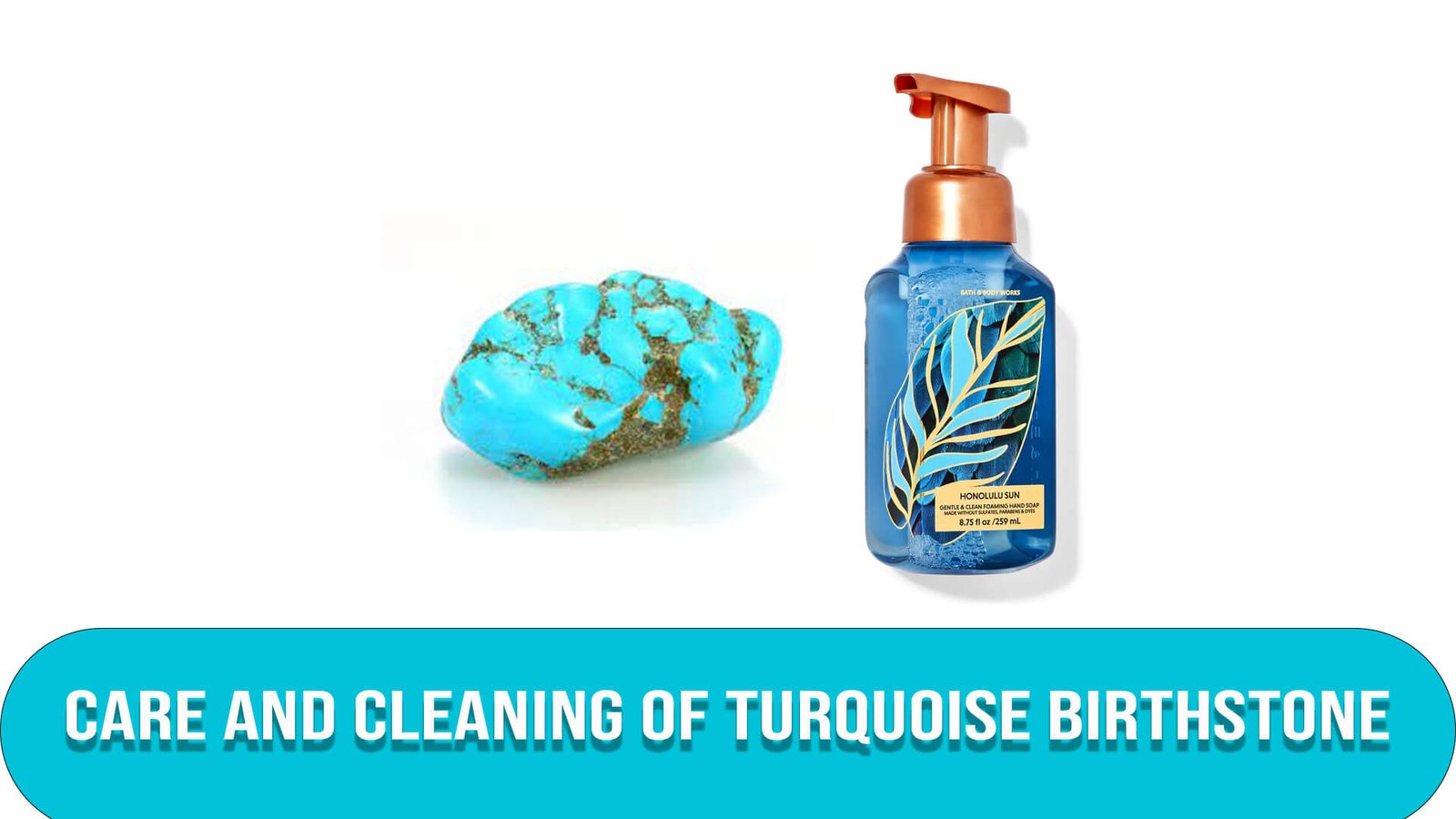
Some turquoise is treated to enhance its toughness (Mohs scale: 5–6), appearance, and gloss. For more hardness or better color, turquoise can be colored or chemically improved by adding epoxy or acrylic resin. Cavities filled with a metal-loaded epoxy are also visible to mimic pyrite inclusions.
Although turquoise is usually resistant to light, extreme heat can lead to deterioration and breakage. Acids can harm your turquoise birthstone and can be stained by some substances, cosmetics, and even sweat or oil from the skin. You can clean turquoise jewelry with warm, soapy water without harm, but never use steam or ultrasonic cleaners on this December birthstone. Some turquoise-coated surfaces can be harmed by heat or chemicals.
December Birthstone Jewelry
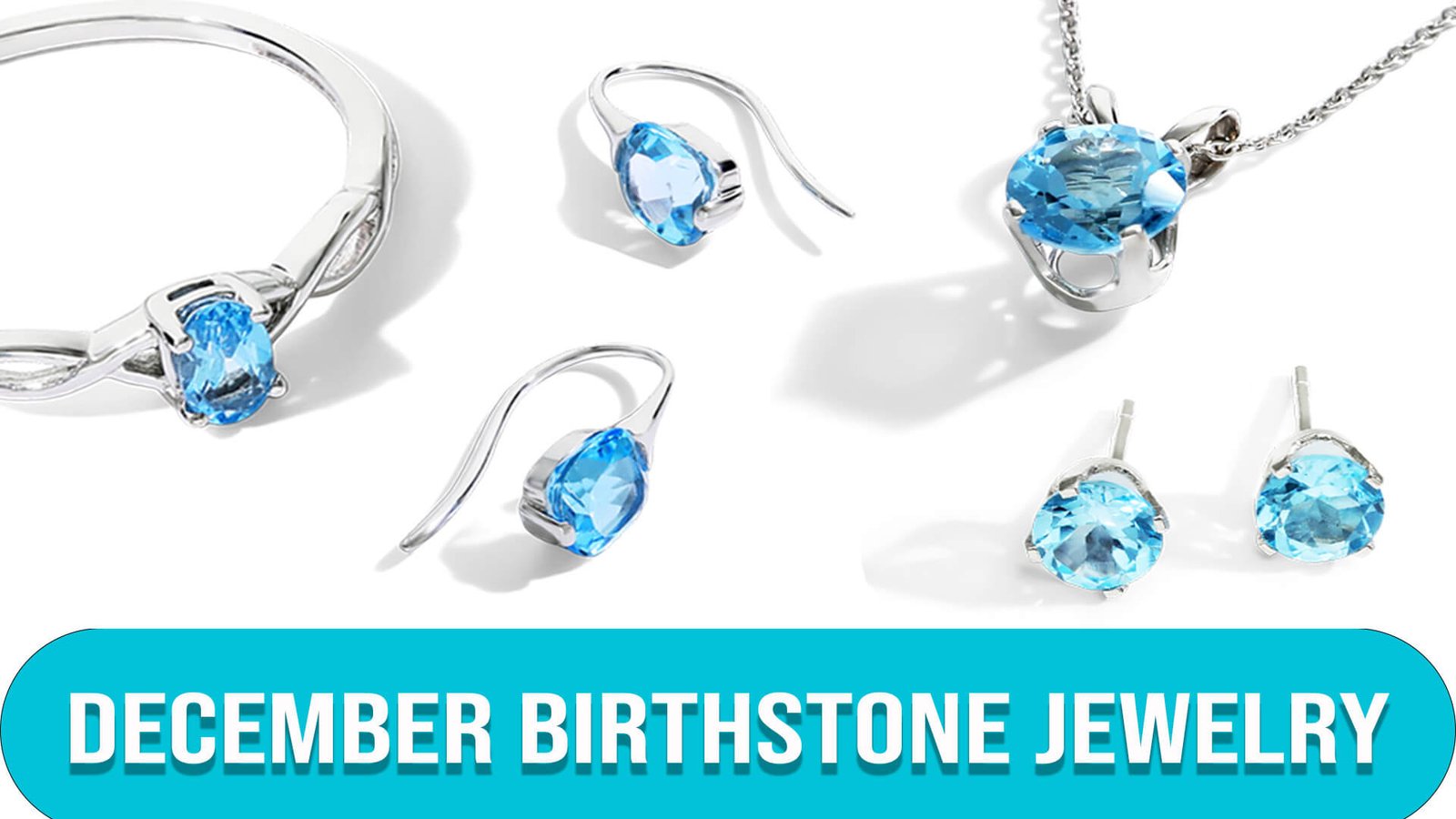
December boasts an array of birthstones, including blue topaz, blue zircon, tanzanite, and turquoise. Blue topaz symbolizes communication and clarity with its soothing hue, while blue zircon dazzles with its intense brilliance, signifying wisdom and prosperity. Tanzanite, a gemstone found exclusively in Tanzania, exhibits a captivating blue-violet shade, symbolizing spiritual enlightenment and transformation. Lastly, turquoise, with its distinctive blue-green color, has been revered for centuries for its protective and healing properties. It is associated with good fortune, strength, and inner calm. Each of these December birthstones offers a unique beauty and significance, allowing individuals born this month to find a gemstone that resonates with their personality and desires.
December Birthstone: Lapis Lazuli
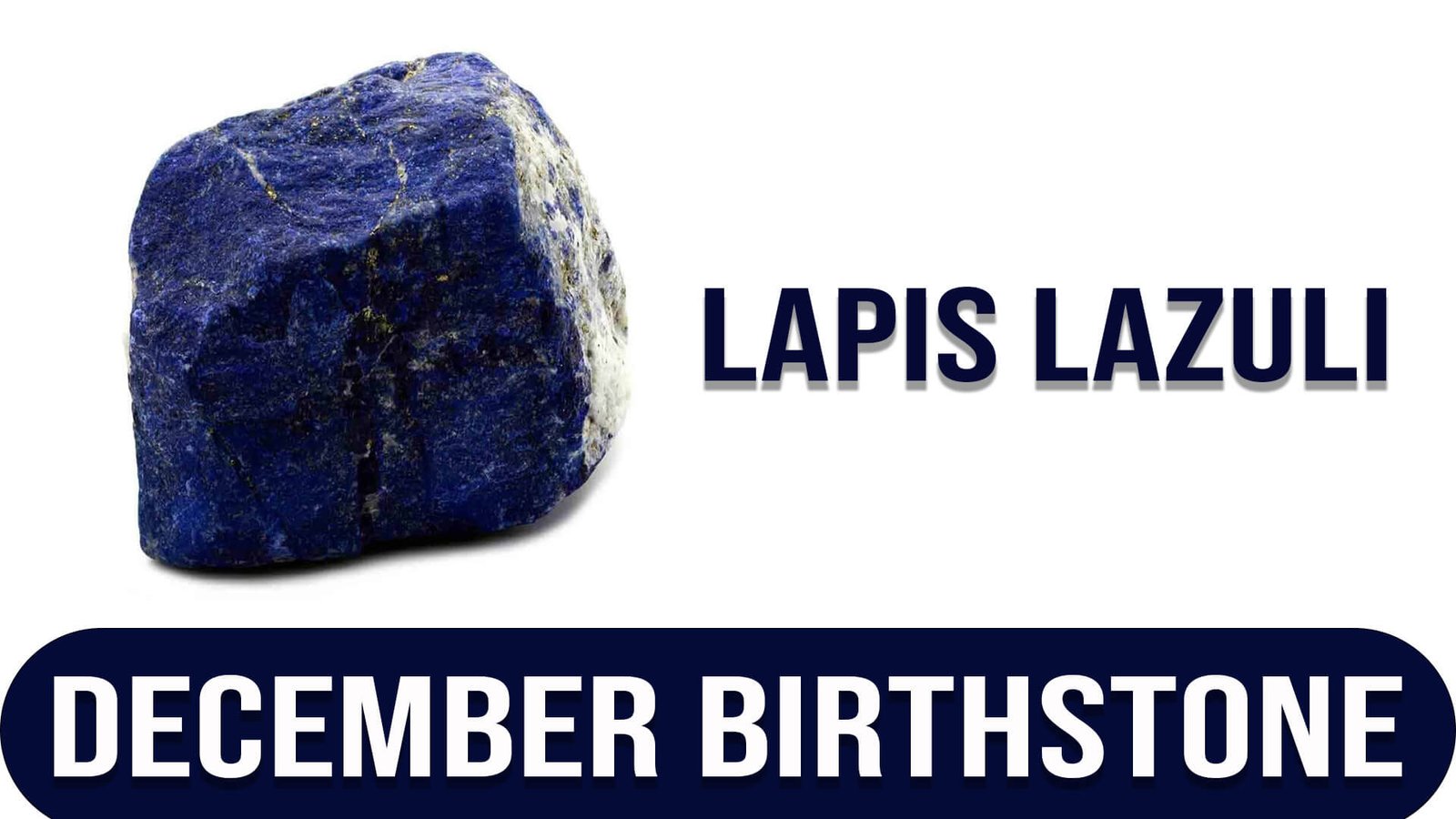
Lapis lazuli is another beautiful blue gemstone that serves as the traditional birthstone for December but it’s not very common. It is a unique stone with a rich history, vibrant colors, deep symbolism, and a range of properties that make it highly sought after in the world of gemstones.
Lapis lazuli is a composite mineral primarily composed of lazurite and other calcite and pyrite. It is known for its intense, deep blue color, often accented by shimmering flecks of gold due to the presence of pyrite. The stone can also display veins or patches of white calcite, adding to its visual appeal.
History of Lapis Lazuli
With a history dating back thousands of years, lapis lazuli has been treasured by various civilizations. It was highly regarded by ancient Egyptians, who used it to create jewelry and amulets. It was even ground into powder for use as a pigment in artwork, most notably the iconic blue dye used in the burial mask of Tutankhamun. It also held significance in Mesopotamia, associated with the goddess Ishtar.
Meaning, Properties, Symbolism, and Folklore of Lapis Lazuli
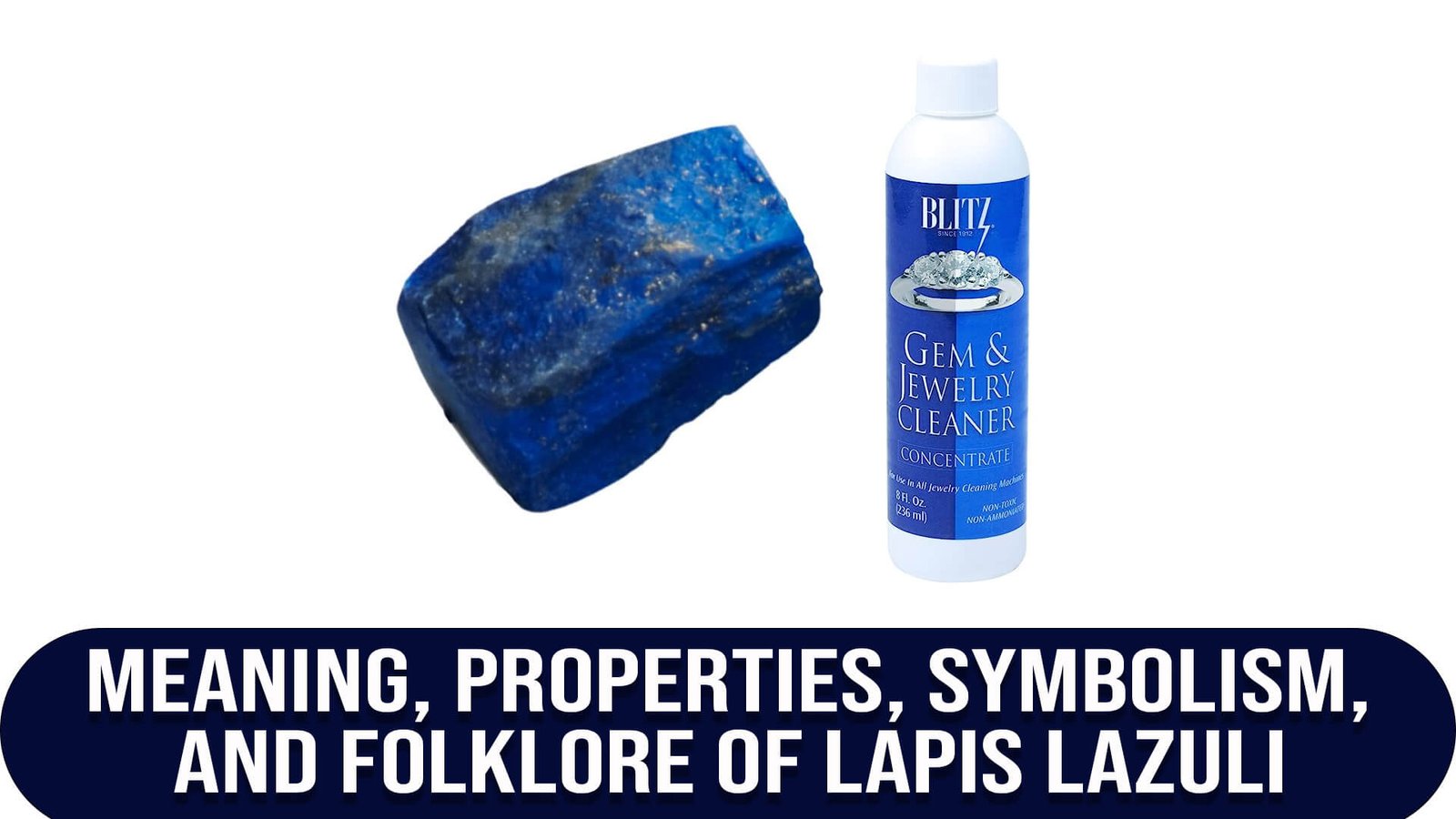
Lapis lazuli carries deep symbolic meanings across different cultures. It has often been associated with wisdom, truth, and enlightenment. In ancient times, it was believed to have magical and healing properties, bringing harmony and peace to its wearer. It was also considered a stone of protection, guarding against negative energies.
Regarding properties, lapis lazuli stimulates the mind, enhancing intellectual abilities and promoting creative expression. It encourages self-awareness and spiritual growth, making it a popular meditation and inner exploration choice. It is also known to promote emotional healing, calming anxieties, and fostering a sense of inner peace.
The folklore surrounding lapis lazuli tells tales of its powers to ward off evil spirits, protect against curses, and promote spiritual enlightenment. Many cultures have used it as a talisman to bring good fortune and prosperity. Lapis lazuli is often associated with the throat chakra, facilitating clear communication and self-expression.
Care and Cleaning of Lapis Lazuli

Protecting it from scratches and harsh chemicals to care for lapis lazuli is essential. It is recommended to store it separately from other gemstones to prevent any potential damage. Cleaning should be done gently using a soft cloth or a mild soap solution, followed by thorough rinsing and drying.
Final Thoughts
In conclusion, the selection of December birthstones offers an exquisite range of blue hues and diverse symbolism. Whether it’s the serene communication and clarity of blue topaz, the wisdom and prosperity represented by blue zircon, the spiritual enlightenment embodied by tanzanite, or the protective qualities and inner calm associated with turquoise, each gemstone holds its allure. These birthstones are beautiful adornments and carry deep meanings and connections to ancient beliefs and traditions. With their vibrant colors and unique properties, blue topaz, blue zircon, tanzanite, and turquoise give individuals born in December various choices to reflect their individuality and celebrate their particular month. Lapis lazuli is also a stunning gemstone with significant historical, symbolic, and metaphysical value. Its deep blue color, flecks of gold, and contrasting white calcite give it a distinctive appearance. Whether worn as jewelry or used for its spiritual properties, lapis lazuli continues to be cherished as a precious stone associated with wisdom, truth, and enlightenment.
Read More: January Birthstone, Febuary Birthstone, March Birthstone, April Birthstone, May Birthstone, June Birthstone, July Birthstone, August Birthstone, September Birthstone, October Birthstone, November Birthstone
